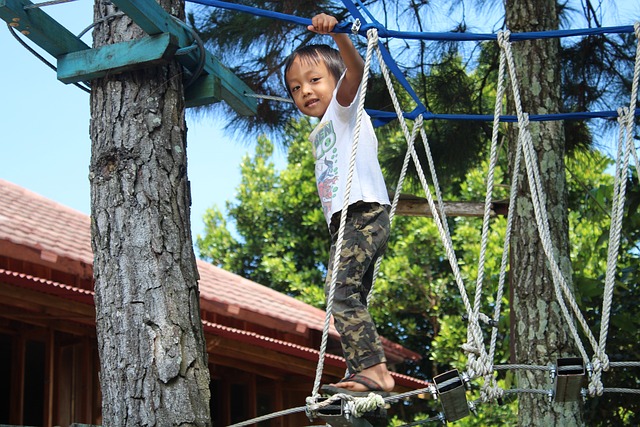To ensure every child's safety, we must adopt a multifaceted approach. This involves specialized safety measures tailored to individual needs, including online protection against cyberbullying and inappropriate content, and age-appropriate education on personal boundaries and self-defense. Family safety plans, robust child protection laws, and supportive community networks are essential tools. By integrating these strategies, we can prevent child abuse, protect against harm, and enhance the security of our children in both digital and physical environments. Key focus areas include personalized safety planning, digital literacy education, open communication, community support, regular safety awareness campaigns, and adherence to legal protections.
“Protecting our children from harm is a paramount concern for every parent and caregiver. Understanding that each child has unique needs when it comes to safety is crucial in preventing potential abuse and injuries. This article offers a comprehensive guide on supporting children with tailored safety plans, encompassing both physical and online environments. From recognizing distinct safety requirements to implementing robust digital literacy education and fostering strong community connections, these strategies ensure every child receives the attention their unique needs demand, ultimately enhancing their overall security.”
Understanding Unique Child Safety Needs: A Comprehensive Approach
Understanding Unique Child Safety Needs requires a comprehensive approach that acknowledges every child’s distinct requirements and vulnerabilities. Children navigate the world differently, and their safety strategies must reflect this diversity. For instance, a child with special needs may require specialized safety measures in public spaces or at home due to mobility issues or sensory sensitivities. Similarly, online safety for kids is an emerging concern, as digital interactions can expose them to potential risks like cyberbullying or inappropriate content.
Comprehensive child safety tips involve educating both children and caregivers about recognizing and mitigating hazards. Safety education for children should be age-appropriate, empowering them with knowledge about personal boundaries, trusted adults to approach in emergencies, and basic self-defense techniques. Family safety plans are integral tools that can foster a safe environment by establishing clear protocols for various scenarios, from sudden emergencies to everyday routines. Protecting children from harm and ensuring their security involves not just physical safety but also psychological well-being, which can be achieved through supportive community networks and adherence to robust child protection laws.
Creating Personalized Safety Plans for Every Child
Creating personalized safety plans is a vital step in protecting children from harm and preventing any form of abuse. Every child has unique needs and circumstances, making one-size-fits-all approaches ineffective. To foster a truly safe environment, parents, caregivers, and educators must tailor these plans to each individual child. This involves understanding their specific risks and vulnerabilities, whether it’s online safety for kids, navigating social interactions, or managing medical conditions that could lead to child injury. By incorporating child safety tips into daily routines and open dialogue about potential dangers, we empower them to recognize and avoid threats.
Safety education for children should be age-appropriate and comprehensive, covering topics like stranger danger, cyberbullying, and recognizing and reporting suspicious activities in their surroundings. Implementing family safety plans that include clear communication, emergency contacts, and established routines can significantly contribute to ensuring child security. Moreover, adhering to local child protection laws and staying informed about community resources dedicated to child abuse prevention are essential steps in creating a supportive network around every child.
Implementing Online Safety Measures and Digital Literacy Education
In today’s digital era, implementing robust online safety measures and digital literacy education is paramount in protecting children from harm. Children with unique needs require tailored approaches to navigate the virtual landscape securely. This includes establishing clear guidelines for internet usage, teaching them about potential online risks, and empowering them with the skills to recognize and report suspicious activities. By integrating these measures into family safety plans, parents and caregivers can significantly contribute to child abuse prevention and ensuring child security.
Digital literacy education plays a crucial role in fostering safe environments for children. It equips them with knowledge about privacy settings, the importance of not sharing personal information online, and recognizing online predators or inappropriate content. These skills are essential components of comprehensive child safety tips, helping to prevent potential child injuries and safeguarding their overall well-being under family protection laws.
Strengthening Family Connections and Community Support for Enhanced Protection
Strengthening Family Connections and Community Support plays a pivotal role in enhancing protection for children with unique needs. By fostering open communication channels within families, parents and caregivers can create a safe space to discuss potential risks and implement tailored safety plans. This involves teaching children about online safety, recognizing signs of potential abuse or harm, and empowering them with strategies to seek help. Community support amplifies these efforts by offering resources such as specialized programs, educational workshops, and peer groups that cater to the specific needs of these families.
Collaborative efforts between parents, caregivers, schools, and community organizations are essential in creating a comprehensive child safety network. Regular safety education for children, coupled with awareness campaigns, ensures they understand their rights and know whom to approach for help. Strengthening these connections not only reinforces protection against physical harm but also mental and emotional well-being, ensuring children grow up in a nurturing and supportive environment that respects their unique needs.
Protecting our children from harm is a multifaceted endeavor that requires tailored strategies to address their unique needs. By implementing comprehensive safety plans, including digital literacy and online safety measures, we can empower both children and families with the knowledge and tools needed to navigate potential risks. Through strengthening community connections and fostering safe environments, we contribute to the prevention of child abuse and play a vital role in ensuring each child’s security and well-being. These child safety tips are essential steps towards creating a safer world for our future generations.
